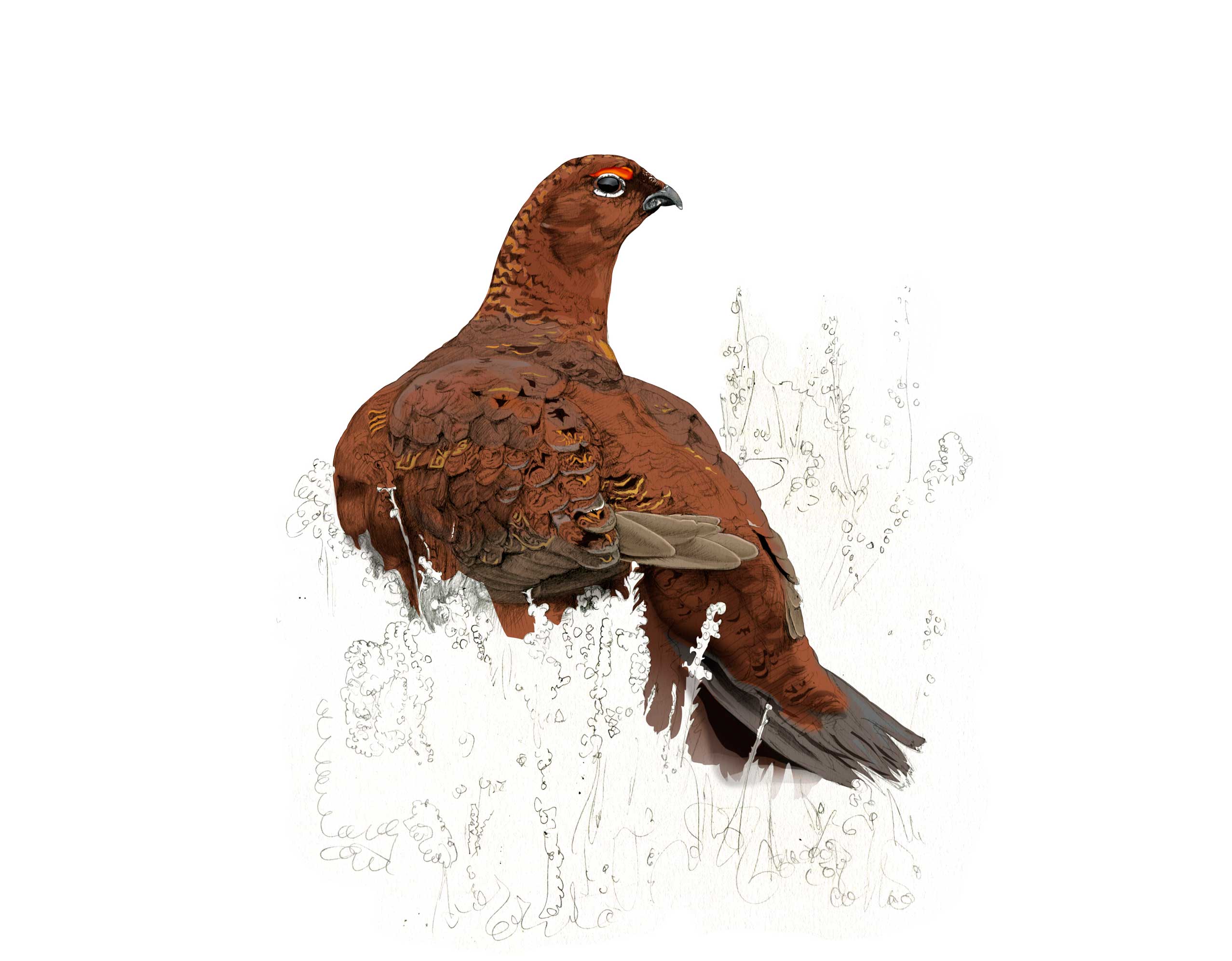
Lagopus lagopus
Red grouse are found only on heather moorland, where they live throughout the year. The red grouse is native to Britain, but its close relative the willow grouse is found throughout northern Europe, Asia, Canada and Alaska.
The red grouse is a plump, dark brown bird, about the size of a small farmyard hen. Its mottled brown feathers provide good camouflage amongst the heather. It has pale-coloured, feathered legs and feet to help keep itself warm in winter. Male red grouse have a bright red stripe above their eye, which is used to attract females at mating time. Females don’t have this red eye stripe and are a little paler in colour. The red grouse gives a very distinctive call that sounds like ’Go back! Go back! Go back’ as it flies fast and low above the heather.
Red grouse have a short, strong beak designed for eating shoots, seeds and flowers of heather, but they may also take some berries such as bilberry and other moorland plants. They also eat grit which helps to break down food in the gizzard. Insects are an important source of food for the chicks, and the adults often take the chicks to boggy areas where insects are more numerous. Red grouse nest on the ground in hollows lined with grass, and the females lay between 6 and 12 eggs in April or May. Only the female sits on the eggs, but the male helps to feed the chicks for about three weeks until they are able to fly. Like many ground-nesting birds, adults can pretend to have a broken wing to distract predators away from the nest. When a peregrine is in the area grouse crouch down amongst the heather and keep still as peregrines usually catch flying birds. The adults and chicks then stay in a family group until the autumn.
Since Victorian times grouse shooting has been a country sport. Red grouse cannot be bred in captivity easily, so gamekeepers look after the moors to suit the grouse. Ideally there will be some grouse to shoot and plenty left to breed the following year. Red grouse need young heather with tender, green shoots for feeding and older, taller heather in which to shelter and build nests. Gamekeepers achieve this by burning small areas of old heather every year, which encourages new heather plants to grow.
The number of red grouse on the North York Moors changes from year to year, depending on how many birds die as a result of disease and predation. In a good year there may be up to 40 pairs per square kilometre. You can help red grouse by keeping your dog on a lead to avoid disturbing chicks in the breeding season.